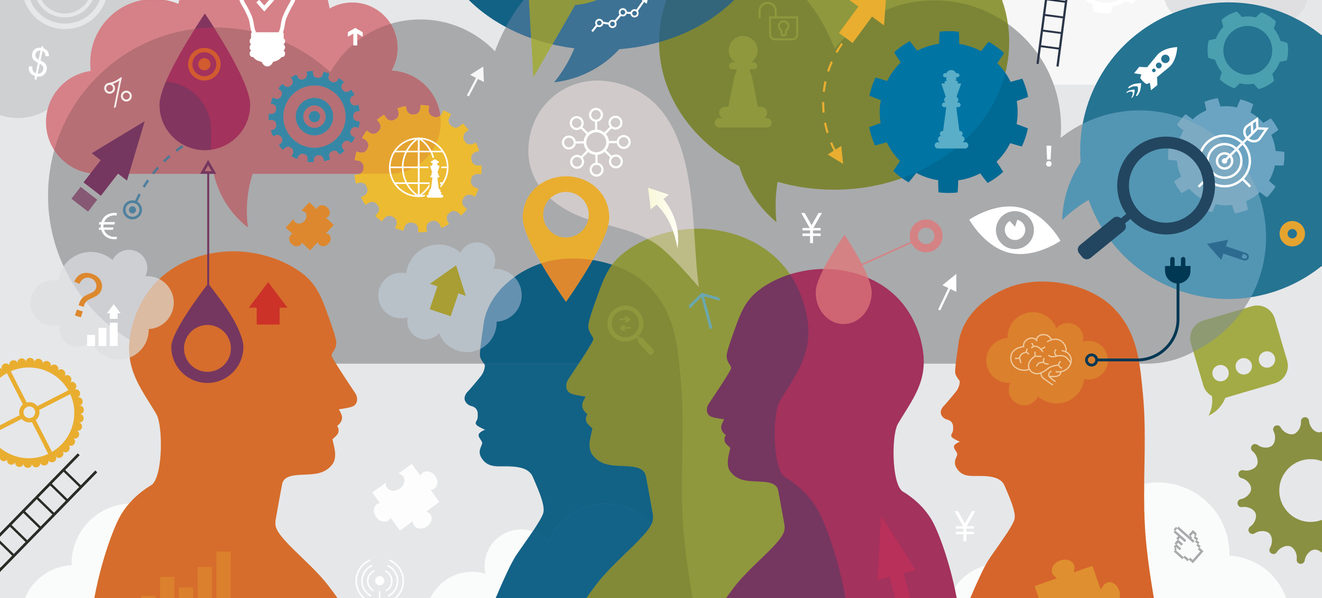Intelligence can be subjective. As we learn more about the mind’s effect on our personal and professional lives, we understand that our thoughts, words and actions are all elements of human behavior. Holistic Intelligence Quotient (H.i.Q.) helps us understand our own—and others’—behavior for improved work and interpersonal relationships.
In a recent Smart Meetings webinar, human behavior and conflict resolution expert, Amilya Antonetti, chief digital strategist and marketing officer at Steve Harvey World Group, shared exciting insights on applying H.i.Q. to understand different human behaviors and personalities for better meetings.
What is H. I. Q?
According to Antonetti, “H.i.Q. are robust assessments and programs that guide people, teams, and leaders through the layers of individual human development. It is a tool that can decode people and problems. It allows you to narrow down or streamline exactly what you want to do and reverse engineer it to tell you exactly how or what you need to do, step by step, to get it done.”
How does it work?
As the first layer in H.I.Q, it is essential to recognize where you are in your development. “Only when you decode you, can you understand how to decode another person,” said Antonetti. At this stage, you start with understanding human behavior that teaches you how learn, recall and remember. H.I.Q refers to this process as “imprinting.”
The three learning styles are visual, auditory and kinesthetic (VAK.). “VAK is a permanent attribute learned and encoded in the brain at a very early age, normally beginning from birth and developed by the age of four or five; and this attribute is wired to be the primary style,” Antonetti noted. People in each of these styles experience the same things differently, and this creates a gap, as it makes it extremely difficult for the other two styles to follow or try to learn from one another.
Visual Learners
This type of learner stores visual information in their mind, such as a collage of pictures, to recall and remember experiences. Even if they receive information by sound, their subconscious mind creates images from the different sounds they hear. So, as they recall an experience, they use words such as “I see” and “I saw” with intricate details in their mind, which has stored a collage for them. They remember details such as the color, texture and people in their experience.
Auditory Learners
This type of learner depends on listening and repeating as a primary way of learning. They convert everything to a list so they can check what they need to accomplish. Even if they only see something, they transform the experience into a list. This type of learner may have difficulty understanding instructions with pictorial references as they prefer lists. They do well when presented with instructions in a logical order or in a sequence of things that need to be done. They need to be organized and process everything in an orderly manner. Auditory learners also have a keen sense for tone and pitch and can understand when emotions are high or low by the change in tone.
More: The All-Inclusive Meetings Revolution
Kinesthetic Learners
This type of learner is the most difficult to interact with on the front-end, but they reinvent and re-engineer processes for new and better ways. They are tactile learners who like to dwell deep and go as far as they can until they hit a roadblock. A kinesthetic learner remembers best the different things they experience. They can hold on to great experiences for a long time and can quickly eliminate experiences that did not meet their expectations.
Kinesthetic learners find it difficult to understand information from written or audio forms. They also can remember enormous details from an experience or nothing at all. These types of learners are great in a team that is trying to find a way to duplicate a process, as they will discover efficient, alternate ways to achieve results.
Which learning style is the best?
Each learning style is different and holds its own unique ability that adds value. In short, no one learning style is better or worse than the other. It is important to understand your façade of personality and take appropriate measures to communicate with different types of learners.
What is your learning style?
It is common for people to identify with all three learning styles or feel like they are a combination of two or all three styles, but everyone has a primary, preferred style which stands out when faced with a conflict situation.
How does it benefit you?
Once you understand your preferred style, it enables you to teach people how to best communicate in your learning style when you are looking for guidance or help. Learning the different learning styles also allows you to understand how to adjust your style to communicate with others effectively.
More: 4 Top Trends for Inclusive Meetings in 2019
If you are planning for an event or meeting, it is important to incorporate your information in all three learning styles as it allows you to bridge the gap and communicate your message to a broader audience. This can help you achieve:
- Higher conversion rates
- Higher retention rates
- Higher ratings on the overall experience
Remember, if you communicate in just one style, you are only reaching one-third of your attendees.
If you are curious about understanding your learning style, you can take the decoding conflict assessment to learn more.




